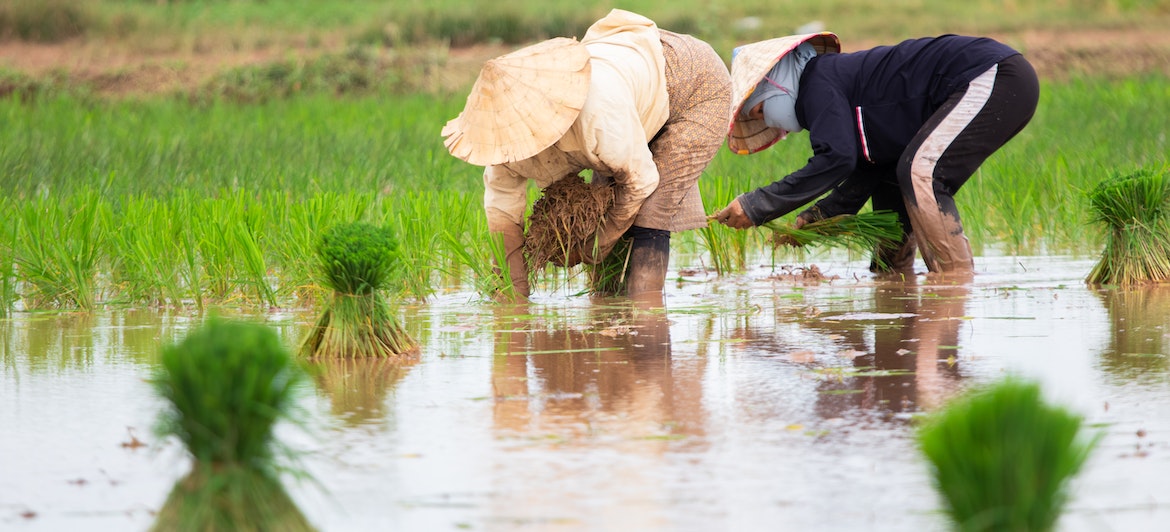
Crisis At Hand
Gender Crisis
Women, contributing 60% to 80% of the labour, are significantly worse due to their low control over resources. While they perform the most labour intensive tasks in the value chain (e.g., transplanting, weeding, or harvesting), their work is often unrecognized.
This is primarily due to gender norms that place a lower value on women’s work and exclude them from the higher value-generating aspects of the production chain. In addition, women often do not have land ownership. For example, in Tanzania, women own only 19% of land despite being the major rice workers in the country.
They also have less access than men to knowledge, skills, and productive assets, including agricultural inputs, improved seeds, land, and credit, among others. With rice productivity at risk due to climate change, the livelihoods of smallholder farmers and women will be most affected. At the same time, these farmers are resource-poor, limiting their potential to invest in operations and tools to improve yield and adopt sustainable practices.
Enhancing the sustainability of rice production to improve outcomes for smallholder farmers, while ensuring environmental sustainability, is hence an important and urgent need.
Climate Crisis
The Rice sector is a major contributor to the climate crisis: Estimates suggest that 2.5% of human-induced climate warming can be attributed to rice farming. The rice industry consumes 40% of the world’s irrigation water, resulting in the depletion of water availability, exacerbating the climate crisis.
In addition, rice production is a source of ~10% of global methane emissions, a number which rises to 25-33% in the rice producing countries of Southeast Asia. The practice of stubble burning in some rice growing countries, while declining, continues to contribute to the climate crisis. For example, in India, 23 Mn. tons of paddy residue are burnt every year, increasing levels of CO2 by 70%, CO by 7% and NO2 by 2.1%.
The sector is highly sensitive to the climate crisis: Due to its water intensive nature, rice is extremely sensitive to water shortages. High temperatures and extreme weather patterns materially affect rice production. In the major rice producing regions of Asia, yields have been estimated to fall by up to 10% with every 1°C increase. Farmers in low or middle-income countries contribute to 94% of the global rice production, the majority of which is produced on farms of one hectare or less.
Besides smallholder farmers (~144 Mn) , more than one billion people depend on rice for their livelihoods. They have low bargaining power, limited access to finance, services and infrastructure, and lack incentives for quality and product differentiation.
